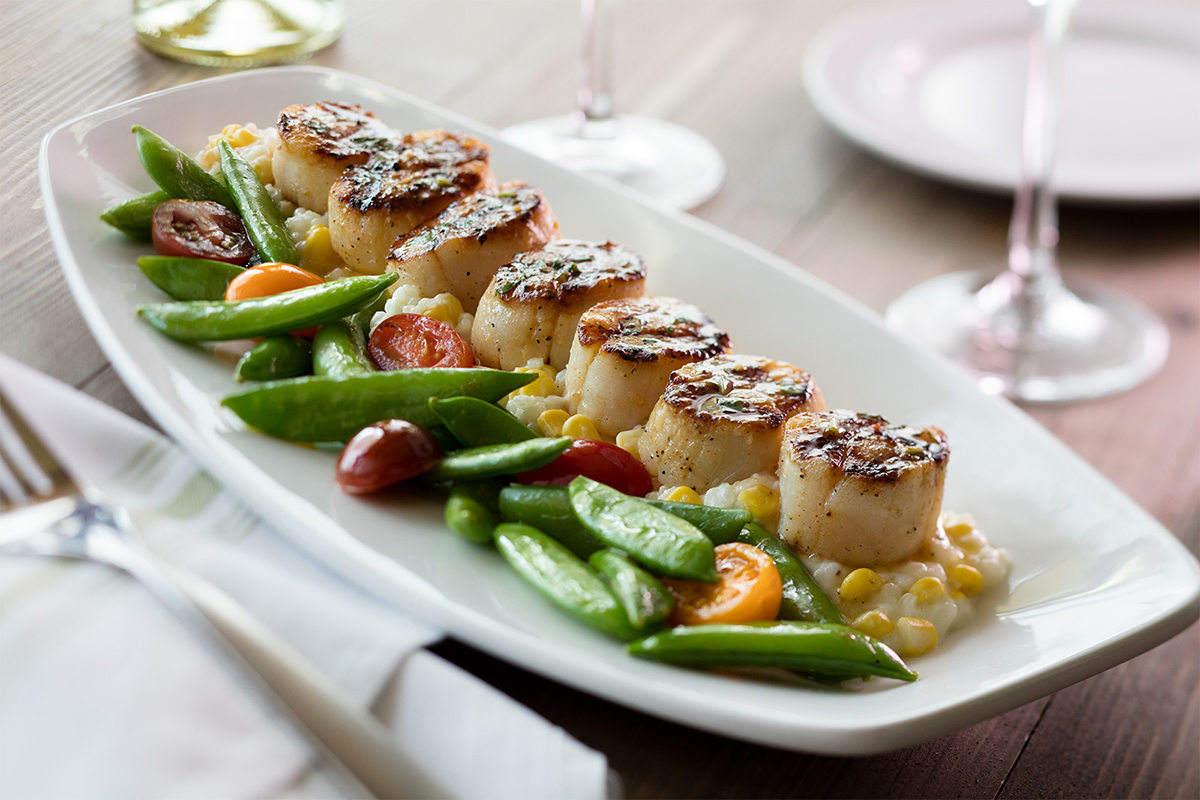Imagine a world where the rich tapestry of classic French cuisine is vibrant and accessible to all, even those with soy or dairy sensitivities. This exploration dives into the heart of French culinary tradition, showcasing how beloved dishes like Boeuf Bourguignon and Crème brûlée can be reimagined without sacrificing their luxurious textures and complex flavors. We’ll journey through innovative substitutions, uncovering the secrets to achieving creamy sauces, delicate soufflés, and perfectly crisp galettes, all while remaining completely soy and dairy-free. Prepare to be surprised by the versatility of plant-based alternatives and the delightful possibilities they unlock.
From exploring the nuances of various dairy-free milks—oat, almond, coconut, and more—to mastering techniques for creating rich, creamy textures without cream or butter, this guide provides detailed recipes, insightful comparisons, and step-by-step instructions. We’ll examine the cultural significance of regional French dishes and demonstrate how to adapt them to suit dietary needs without compromising authenticity. This isn’t just about creating substitutes; it’s about elevating plant-based cooking to a new level of sophistication and deliciousness, proving that French culinary artistry knows no bounds.
Modern French Cuisine

Modern French cuisine, traditionally reliant on dairy and soy, undergoes a delightful transformation when embracing innovative, plant-based alternatives. This approach not only caters to dietary restrictions but also unlocks exciting new flavor profiles and textures, showcasing the versatility and adaptability of classic techniques. The richness and creaminess so integral to French culinary heritage can be achieved without compromising on taste or elegance.
Creamy Textures and Rich Flavors Without Dairy or Soy
Achieving the luxurious mouthfeel of classic French sauces without cream or butter necessitates a creative approach utilizing alternative ingredients. Cashews, potatoes, and even certain vegetables can be expertly blended to create creamy bases. Nut-based creams, for example, offer a naturally rich texture and subtle nutty notes that complement many savory dishes. Thickened vegetable purees, such as butternut squash or cauliflower, contribute a velvety texture and inherent sweetness that can be balanced with acidity or spices. The key lies in understanding how different ingredients interact and behave during cooking to create the desired consistency and flavor profile.
For instance, a vibrant and creamy sauce for roasted vegetables can be achieved by pureeing roasted butternut squash with a touch of vegetable broth and lemon juice. The natural sweetness of the squash combines with the tartness of the lemon, creating a balanced and sophisticated flavor. Similarly, a creamy mushroom sauce can be crafted by finely chopping mushrooms and sautéing them until tender, then blending them with a cashew cream base and white wine for a rich and earthy flavor. The cashew cream provides a velvety texture, mimicking the richness of a traditional cream sauce.
Dairy-Free Béchamel Sauce
A classic béchamel sauce, the foundation for many French sauces, can be successfully recreated using dairy-free alternatives. The process involves creating a roux (a mixture of fat and flour) as the base, then gradually whisking in a plant-based milk alternative until a smooth, creamy consistency is achieved.
- Melt 2 tablespoons of vegan butter (coconut oil or olive oil can also be used) in a saucepan over medium heat.
- Whisk in 2 tablespoons of all-purpose flour, ensuring no lumps form. Cook for 1-2 minutes, stirring constantly, until the mixture is smooth and slightly golden.
- Gradually whisk in 2 cups of unsweetened plant-based milk (almond, oat, or cashew milk work well), ensuring a smooth consistency. Add a pinch of salt and white pepper.
- Continue whisking over low heat until the sauce thickens to your desired consistency. This may take 5-10 minutes.
- Season to taste with additional salt, pepper, nutmeg, or other desired spices. A touch of nutritional yeast can add a cheesy flavor.
To achieve the perfect consistency, ensure the roux is cooked sufficiently before adding the milk, and whisk continuously to prevent lumps from forming. Adjusting the amount of flour can alter the thickness of the sauce. Experiment with different plant-based milks to find your preferred flavor and texture.
Visually Appealing Presentation of Reimagined French Dishes
The visual presentation of food is paramount in French cuisine. Reimagining classic dishes without dairy or soy doesn’t mean compromising on aesthetic appeal.
Reimagined Beef Bourguignon
Imagine a rich, dark-red beef bourguignon, the beef cubes glistening with a deep, reduced red wine sauce, studded with pearl onions and mushrooms. Plated on a rustic, white ceramic plate, the dish is garnished with a scattering of fresh parsley, its vibrant green contrasting beautifully with the deep red of the sauce. The textures are a delightful mix – tender, melt-in-your-mouth beef, the slight bite of the onions, and the earthy mushrooms, all complemented by the rich, velvety sauce, achieved using a cashew cream base instead of traditional cream.
Dairy-Free Crème Brûlée
A creamy, golden-yellow dairy-free crème brûlée, made with a coconut milk base, is presented in a small, elegant ramekin. The surface is delicately caramelized, creating a thin, crackly layer of dark amber sugar that contrasts sharply with the pale yellow of the custard underneath. The smooth, almost silken texture of the custard is emphasized by the contrast with the crisp sugar topping. A dusting of cinnamon adds a warm spice note.
Plant-Based Ratatouille Tart
A vibrant, colorful ratatouille tart, bursting with the colors of summer, is presented on a slate platter. The tart crust is golden brown and crisp, contrasting with the deep purple of the eggplant, the bright red of the tomatoes, the sunny yellow of the zucchini, and the deep green of the peppers within the filling. The arrangement of the vegetables within the tart is artistic and deliberate, showcasing the beautiful colors and textures of the ingredients. The overall presentation is rustic yet refined, showcasing the fresh, vibrant flavors of the ratatouille.
Regional Variations
A captivating journey through the diverse culinary landscape of France reveals a wealth of regional specialties, each reflecting unique terroir and traditions. This exploration focuses on adapting three iconic dishes to be both delicious and free from soy and dairy, demonstrating that authentic French flavors can thrive without these common ingredients. The adaptations maintain the essence of the original recipes while offering a fresh, inclusive perspective on classic French cuisine.
Adapting Classic French Dishes: Soy-Free and Dairy-Free
This section details the transformation of three signature French dishes, one from each of three distinct regions, into delectable soy-free and dairy-free versions. The substitutions made are carefully chosen to preserve the integrity of the original recipes while ensuring a satisfying culinary experience. The rich textures and complex flavors of traditional French cuisine are maintained, proving that deliciousness is not dependent on soy or dairy products.
- Bouillabaisse (Provence): A vibrant Provençal fish stew, traditionally enriched with a creamy saffron-infused broth. Our adaptation replaces the traditional dairy-based cream with a luxurious coconut cream base, delivering a similarly rich and velvety texture. The saffron still sings its bright, sunny notes, while the medley of fresh seafood remains the star. A downloadable PDF with the full recipe, including detailed instructions and ingredient substitutions, is available. [Downloadable PDF: “Bouillabaisse Provençale – Soy-Free & Dairy-Free”]. This adaptation respects the original’s emphasis on fresh, seasonal seafood and vibrant aromatics, capturing the essence of the Provençal coast without compromising on flavor or texture.
- Potée Lorraine (Lorraine): This hearty stew, a staple of Lorraine, typically features pork, potatoes, and root vegetables. While the traditional version may include dairy-based additions, our adaptation uses vegetable broth to achieve a rich and satisfying base. The smoky flavors of the pork, combined with the earthiness of the root vegetables, remain central to this rustic dish. The PDF provides precise instructions and ingredient substitutions. [Downloadable PDF: “Potée Lorraine – Soy-Free & Dairy-Free”]. The cultural significance of this dish lies in its simplicity and reliance on readily available ingredients, reflecting the resourceful nature of the Lorraine region. Our adaptation maintains this ethos while offering a healthier and more inclusive alternative.
- Confit de Canard (Southwestern France): This iconic dish from Southwestern France features duck confit, traditionally rendered in its own fat. Our adaptation maintains the traditional method of slow-cooking the duck legs until meltingly tender, but utilizes a flavorful blend of herbs and spices to enhance the natural richness of the duck. The absence of dairy is seamlessly integrated, resulting in a dish that is equally satisfying and authentic. [Downloadable PDF: “Confit de Canard – Soy-Free & Dairy-Free”]. The cultural importance of Confit de Canard lies in its preservation techniques, historically crucial in a region known for its rich agricultural heritage. Our adaptation pays homage to this history by preserving the essence of the slow-cooking method while offering a contemporary and inclusive interpretation.
Reimagining French cuisine without soy or dairy unveils a world of culinary creativity and delicious possibilities. By embracing innovative substitutions and mastering new techniques, we’ve demonstrated that classic dishes can be both allergy-friendly and exquisitely flavorful. The journey through regional variations, exploring the unique characteristics of different plant-based milks, and mastering the art of dairy-free sauces has shown that adaptation doesn’t mean compromise. Instead, it opens doors to exciting new flavor profiles and textures, proving that the spirit of French gastronomy thrives even without traditional dairy and soy ingredients. This exploration encourages a deeper appreciation for the versatility of plant-based cooking and invites you to embark on your own culinary adventures, reimagining your favorite dishes with fresh, innovative approaches.
Q&A
Can I use any dairy-free milk in these recipes?
While many dairy-free milks work, the specific properties (like thickness and sweetness) will affect the final result. The recipes often suggest optimal choices, but experimentation is encouraged!
Are these recipes suitable for all allergies?
These recipes are soy-free and dairy-free, but always check all ingredient labels to ensure they meet your specific dietary needs and avoid potential cross-contamination.
How long do these dishes keep?
Storage times vary depending on the dish. Refer to individual recipe instructions for specific guidelines. Generally, refrigeration is recommended, and some dishes may freeze well.
Where can I find the specific dairy-free substitutes mentioned?
Most large supermarkets and health food stores carry the substitutes discussed. You can also find many online retailers specializing in dairy-free and soy-free products.


